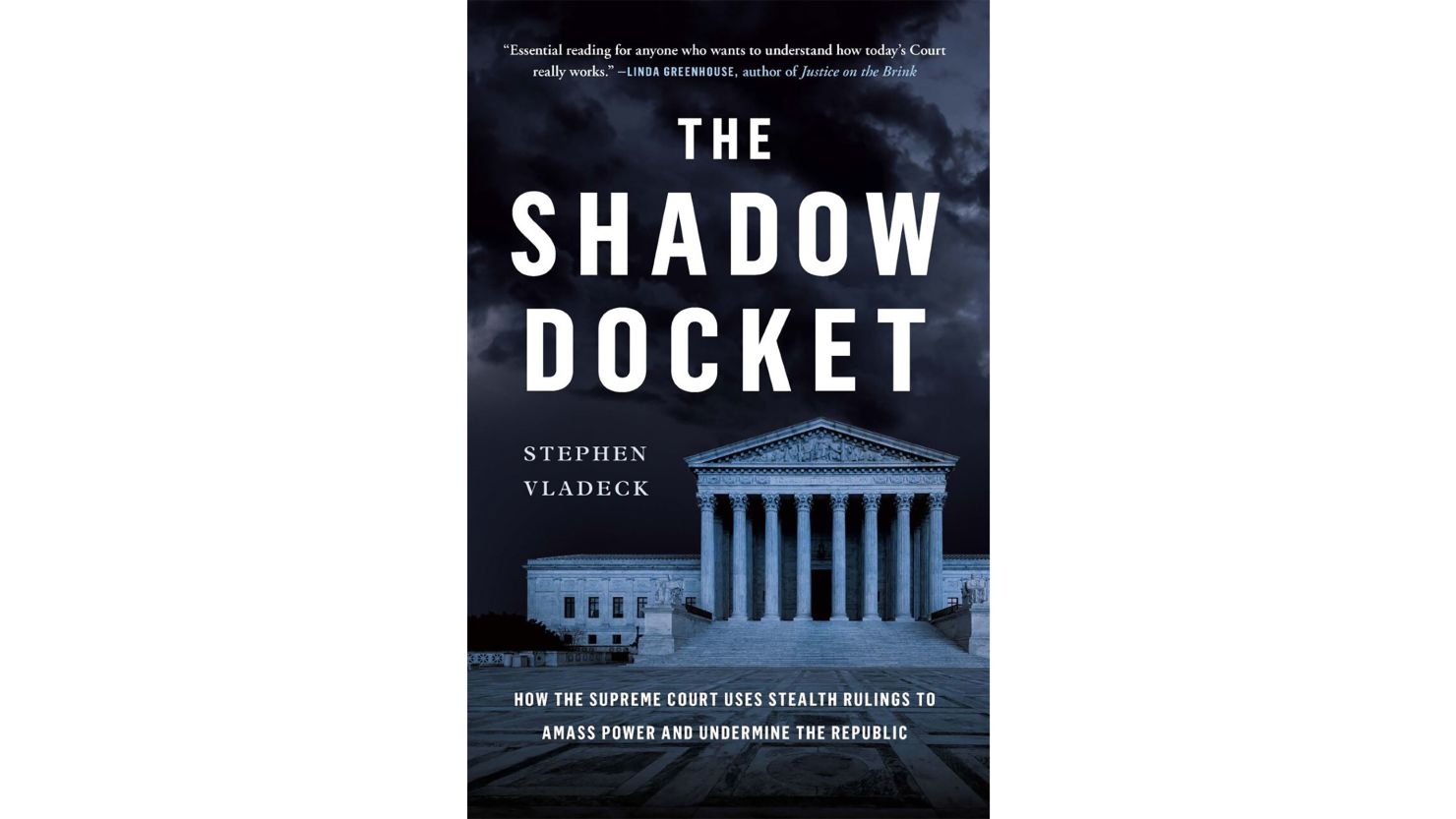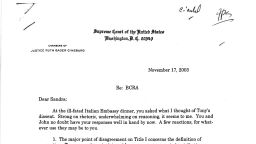The Supreme Court has increasingly used emergency orders to shape the law in cases concerning a variety of hot-button issues, a move that has quietly given the court more power over the years, CNN Supreme Court analyst Steve Vladeck says in a new book released Tuesday on the so-called “shadow docket.”
Officially known as the emergency docket, it has come to be known by court watchers as its shadow docket since unsigned and unexplained orders can allow the justices to act on a case while also shielding the legal analysis behind the decision and the vote count. By contrast, the high court’s merits docket includes a full briefing and hearing process that produces the formal opinions the justices typically issue in May and June.
The change manifested itself during the Trump administration, where the Justice Department used the docket to seek relief in cases that affect wide swaths of the country and that would have usually been decided by the justices following the normal process.
“In just four years Trump’s solicitor generals sought emergency relief from the Supreme Court a total of forty-one times – a more than twentyfold increase over (George W.) Bush’s and (Barack) Obama’s SGs combined,” Vladeck, also a University of Texas Law professor, writes in “The Shadow Docket: How the Supreme Court Uses Stealth Rulings to Amass Power and Undermine the Republic.”
The “increasing prevalence and public significance” of the shadow docket, Vladeck writes, “reflects a power grab by a court that has, for better or worse, been insulated from any kind of legislative response.”
Behavior by members of the Supreme Court, both on and off the bench, has come under intense scrutiny in recent months, with criticism being aimed at everything from the conservative majority’s decision last June to eliminate nearly 50 years of abortion rights to a lack of transparency from some justices around their annual financial disclosure forms.
The court’s recent tendency to use the shadow docket to make highly consequential decisions has also faced harsh criticism, particularly among liberal legal scholars. But tension over the docket also exists internally, with at least two conservative members of the bench having publicly pushed back on its use.
“Since the mid-2010s, there has been a radical shift in how (and how often) the justices use the shadow docket – not just to manage their workload, but to change the law both on the ground and on the books,” Vladeck states.
“From immigration to elections, from abortion to the death penalty, from religious liberty to the power of federal administrative agencies, the Supreme Court has, with increasing frequency, intervened preemptively, if not prematurely, in some of our country’s most fraught political disputes through decisions that are unseen, unsigned, and also always unexplained,” the book reads.
Vladeck, who has argued several cases before the high court, told CNN that the book’s goal is to “reshape how we talk about the court” by showing “just how problematic a lot of the current court’s behavior has become. And how, if you look at the shadows, if you look at the stuff that doesn’t get the same kind of public attention, there are even more alarming developments in the court’s behavior.”
Vladeck said that while he hasn’t filed an emergency application to the court in a case, he has submitted a friend-of-the-court brief in support of the Biden administration when the government sought emergency relief in a case concerning new immigration policies.
Aiding a perception of partisanship
In the book, Vladeck explains how historically, the court’s emergency docket was used in capital cases, where a death row inmate would seek an 11th hour intervention by the court to halt their execution.
But the increased use for other cases, often ones that are politically fraught, has made things more partisan, he argues.
“Unlike rulings on emergency applications from the Bush and Obama administrations, the Trump orders were increasingly divisive as well. Twenty-seven of the thirty-six decisions included at least one public dissent; ten were publicly 5-4 (perhaps others were behind the scenes),” according to the book.
Vladeck adds that because President Joe Biden undid many of Trump’s controversial policies, challenges to those policies that were before the Supreme Court became moot, which meant “the stay rulings (issued on the emergency docket) were typically the justices’ only involvement in these disputes.”
He argues that the justices’ decision to use the shadow docket in controversial cases has further politicized a court that, up until recently, had been viewed by the public as the only nonpartisan branch of government. “The lack of substantive analysis to support most of these decisions does nothing to contradict the perception that the court is becoming more partisan,” Vladeck writes.
Among the high-profile shadow docket cases highlighted in the book are ones concerning Covid-19 era mandates and restrictions, some of which the court rolled back by ruling that they violated religious liberties protections.
Republicans also greatly benefited from the shadow docket, the book points out, after the Supreme Court, acting on emergency petitions, allowed Alabama and Louisiana to use in the 2022 midterms recently redrawn congressional maps that favored the GOP. In doing so, the court disregarded lower court rulings that said the maps likely violated the Voting Rights Act by diluting the power of Black voters.
Internal frustration comes to light
Criticism of the shadow docket among the court’s members exists on both ends of the ideological spectrum.
Conservative Justice Samuel Alito in 2021 rejected the use of the term in a lecture at the University of Notre Dame, saying he wanted to “dispel some imaginary shadows” and push back on a notion that the court was acting “sneaky or dangerous.” He said the recent criticism was geared to suggest “that a dangerous cabal is deciding important issues in a novel, secretive, improper way, in the middle of the night, hidden from public view.”
The court’s liberal members have also occasionally dished out complaints about the shadow docket in recent years, including in September 2021, a few weeks before Alito’s speech, when they angrily publicly dissented from the court’s decision to deny a request from Texas abortion providers to freeze a state law that bars abortions after six weeks.
“The majority’s decision is emblematic of too much of this Court’s shadow docket decision-making – which every day becomes more unreasoned, inconsistent, and impossible to defend,” Justice Elena Kagan wrote in a dissent.
The following month, conservative Justice Amy Coney Barrett appeared to signal her own growing frustration with the shadow docket when she publicly agreed with the court’s decision to deny an emergency request to block a Maine rule that required certain health care employees to be fully vaccinated against Covid-19.
In a brief statement joined by fellow conservative Justice Brett Kavanaugh, she said that she decided against voting to grant such “extraordinary relief” in part because the case arose on the court’s emergency docket and the justices did not have the benefit of a full briefing and oral arguments.
“In other words, Justices Barrett and Kavanaugh, whose votes were typically dispositive in any closely divided shadow docket ruling, seemed to be signaling that they would not automatically grant emergency relief just because they thought the party seeking it was right,” Vladeck writes.
“Perhaps,” he writes, “they were also acknowledging, in the same vein, that the court had gone a bit too far in prior cases.”
CNN’s Ariane de Vogue contributed to this report.



